Psychiatric evaluation notes are essential tools for documenting patient care, reflecting on practicum experiences, and linking clinical experiences to the learning. The Comprehensive Psychiatric Evaluation Note assignment allows nursing students to thoroughly assess and document a patient's condition. For this assignment, students document a patient's case, focusing on impulse-control or conduct disorders, using a provided template.
Below is a sample of the Comprehensive Psychiatric Evaluation Note and Patient Case Presentation assignment we've completed, demonstrating how to tackle this complex task with clarity and organization. We also provide helpful tips and options for getting assistance with similar assignments.
PRAC 6645: Comprehensive Psychiatric Evaluation Note and Patient Case Presentation
Psychiatric notes are a way to reflect on your practicum experiences and connect the experiences to the learning you gain from your weekly Learning Resources. Comprehensive psychiatric evaluation notes, such as the ones required in this practicum course, are often used in clinical settings to document patient care.
For this Assignment, you will document information about a patient that you examined at your practicum site, using the Comprehensive Psychiatric Evaluation Note Template provided. You will then use this note to develop and record a case presentation for this patient.
To Prepare
- Review this week’s Learning Resources and consider the insights they provide about impulse-control and conduct disorders.
- Select a patient for whom you conducted psychotherapy for an impulse control or conduct disorder during the last 6 weeks.
- Create a Comprehensive Psychiatric Evaluation Note on this patient using the template provided in the Learning Resources. There is also a completed template provided as an exemplar and guide. All psychiatric evaluation notes must be signed, and each page must be initialed by your Preceptor.
- When you submit your note, you should include the complete comprehensive evaluation note as a Word document and pdf/images of each page that is initialed and signed by your Preceptor. You must submit your note using SafeAssign.
- Please Note: Electronic signatures are not accepted. If both files are not received by the due date, Faculty will deduct points per the Walden Grading Policy.
- Then, based on your evaluation of this patient, develop a video presentation of the case. Plan your presentation using the Assignment rubric and rehearse what you plan to say. Be sure to review the Kaltura Media Uploader resource in the left-hand navigation of the classroom for help creating your self-recorded Kaltura video.
- Include at least five scholarly resources to support your assessment and diagnostic reasoning.
- Ensure that you have the appropriate lighting and equipment to record the presentation.
The Assignment
Record yourself presenting the complex case study for your clinical patient. In your presentation:
- Dress professionally with a lab coat and present yourself in a professional manner.
- Display your photo ID at the start of the video when you introduce yourself.
- Ensure that you do not include any information that violates the principles of HIPAA (i.e., don’t use the patient’s name or any other identifying information).
- Present the full complex case study. Be succinct in your presentation, and do not exceed 8 minutes. Include subjective and objective data; assessment from most recent mental status exam; current psychiatric diagnosis including differentials that were ruled out; current psychotherapeutic plan (include one health promotion activity and one patient education strategy you provided); and patient progress toward treatment goals.
- Subjective: What details did the patient provide regarding their chief complaint and symptomology to derive your differential diagnosis? What was the duration and severity of their symptoms? How are their symptoms impacting their functioning in life?
- Objective: What observations did you make during the psychiatric assessment?
- Assessment: Discuss the patient’s mental status examination results. What were your differential diagnoses? Provide a minimum of three possible diagnoses in order of highest to lowest priority and explain why you chose them. What was your primary diagnosis and why? Describe how your primary diagnosis aligns with DSM-5 diagnostic criteria and is supported by the patient’s symptoms.
- Plan: What was your plan for psychotherapy (including one health promotion activity and one patient education strategy)? What was your plan for treatment and management, including alternative therapies? Include nonpharmacologic treatments, alternative therapies, and follow-up parameters, as well as a rationale for this treatment and management plan.
- Reflection notes: What would you do differently with this patient if you could conduct the session again?
By Day 7
Submit your Video and Comprehensive Psychiatric Evaluation Note Assignment. You must submit two files for the evaluation note, including a Word document and scanned pdf/images of each page that is initialed and signed by your Preceptor.
Important information on Writing a Discussion Question
- Your response needs to be a minimum of 150 words (not including your list of references)
- There needs to be at least TWO references with ONE being a peer reviewed professional journal article.
- Include in-text citations in your response
- Do not include quotes—instead summarize and paraphrase the information
- Follow APA-7th edition
- Points will be deducted if the above is not followed
Participation –replies to your classmates or instructor
- A minimum of 6 responses per week, on at least 3 days of the week.
- Each response needs at least ONE reference with citations—best if it is a peer reviewed journal article
- Each response needs to be at least 75 words in length (does not include your list of references)
- Responses need to be substantive by bringing information to the discussion or further enhance the discussion. Responses of “I agree” or “great post” does not count for the word count.
- Follow APA 7th edition
- Points will be deducted if the above is not followed
- Remember to use and follow APA-7th edition for all weekly assignments, discussion questions, and participation points.
Past Psychiatric History:
- General Statement: C.F. is a 16 y/o Caucasian female with h/o depression and anxiety since elementary age and relates most of it to her hypersexuality and actions such inappropriate use of social media, being groomed by men on social media over the years. Patient also has body image issues and difficulty maintaining friendships.
- Caregivers (if applicable): N/A.
- Hospitalizations: Denies
- Medication trials: Denies. However, family has had success with Zoloft and Lexapro. Family history of suicidality (genetic sensitivity) with Prozac.
- Psychotherapy or Previous Psychiatric Diagnosis: Sees a therapist once per week.
Substance Current Use and History:
- History of occasional alcohol use. None currently.
Family Psychiatric/Substance Use History:
- Not specific, but both parents suffer with depression and anxiety, Father has anger issues.
Psychosocial History:
Patient is a 16 y/o single female who lives at home with parents and 2 older sisters ages 18 (currently away for college) and 21-year-old patient is bisexual and reports interest in both boys and girls. She works as a receptionist at a local hair salon. Currently attending 11th grade at local high school. Not in any special program in school. Would like to be in a special program especially the ombudsmen program. Anxiety worsens in social situations and school.
Medical History:
- Current medical problems: Scoliosis (mild)
- Current Medications: None
- Allergies: No known food, drug, plant, animal, or medication allergies
- Reproductive Hx: Single, bisexual, regular periods
ROS:
- GENERAL: Alert and oriented, groomed, appropriately dressed for the season and occasion. However, wearing dramatic eye make-up. Appears younger for age.
- HEENT: no issues
- SKIN: no issues
- CARDIOVASCULAR: no issues
- RESPIRATORY: no issues
- GASTROINTESTINAL: no issues
- GENITOURINARY: no issues
- NEUROLOGICAL: no issues
- MUSCULOSKELETAL: mild scoliosis, constant pain in both knees and back, wears corset for support.
- HEMATOLOGIC: no issues
- LYMPHATICS: no issues
- ENDOCRINOLOGIC: no issues
Objective:
Physical exam:
- Height – 151.1 cm (4’9”)
- Weight – 41.6 kg (91.7 lb)
- BMI – 19.8
Diagnostic results: N/A
Assessment:
Mental Status Examination:
Appearance: Client is well-kempt and appropriately dressed for age, weather, and occasion. Appears younger than stated age.
Eye contact: Hesitant
Speech: normal rhythm and volume
Behavior: Cooperative, fidgety
Psychomotor: Restless/fidgety
Mood: depressed, anxious
Affect: congruent with mood
Thought Process: racing thoughts, but organized
Thought Content: No delusions, passive suicidal and self-harm ideation. No Homicidal ideation.
Perception: No reaction to external or internal stimuli.
Attention/ Concentration: Able to concentrate and participate in the assessment as expected
Cognition: Alert, oriented X 4.
Memory: Short-term and long-term memory are grossly intact.
Insight: limited
Judgment: limited
Fund of Knowledge: Average.
Intelligence: Average.
Submission and Grading Information
To submit your completed Assignment for review and grading, do the following:
- Please save your Assignment using the naming convention “WK7Assgn2+last name+first initial.(extension)” as the name.
- Click the Week 7 Assignment 2 Rubric to review the Grading Criteria for the Assignment.
- Click the Week 7 Assignment 2 link. You will also be able to “View Rubric” for grading criteria from this area.
- Next, from the Attach File area, click on the Browse My Computer button. Find the document you saved as “WK7Assgn2+last name+first initial.(extension)” and click Open.
- If applicable: From the Plagiarism Tools area, click the checkbox for I agree to submit my paper(s) to the Global Reference Database.
- Click on the Submit button to complete your submission.
- To check your Assignment draft for authenticity:
- Submit your Week 7 Assignment 2 draft and review the originality report.
Ace Your Psychiatric Evaluation Assignment with Professional Help
Completing the Comprehensive Psychiatric Evaluation Note and Patient Case Presentation assignment can be challenging. If you find yourself needing further support, expert assistance can simplify the process and ensure your work meets all expectations. Here’s how we can help:
- Clarifying Psychiatric Assessment: Receive guidance on how to conduct a thorough psychiatric assessment and document findings accurately.
- Effective Case Presentation: Get tips on delivering a professional and concise video presentation that meets all rubric criteria.
- APA and Scholarly Support: Learn how to properly incorporate scholarly resources into your work and cite them according to APA standards.
- Organizing Content: Get help structuring your evaluation note and case presentation to ensure clarity and thoroughness.
With expert help, you can confidently complete your psychiatric evaluation note and case presentation, producing a well-organized and high-quality assignment.



